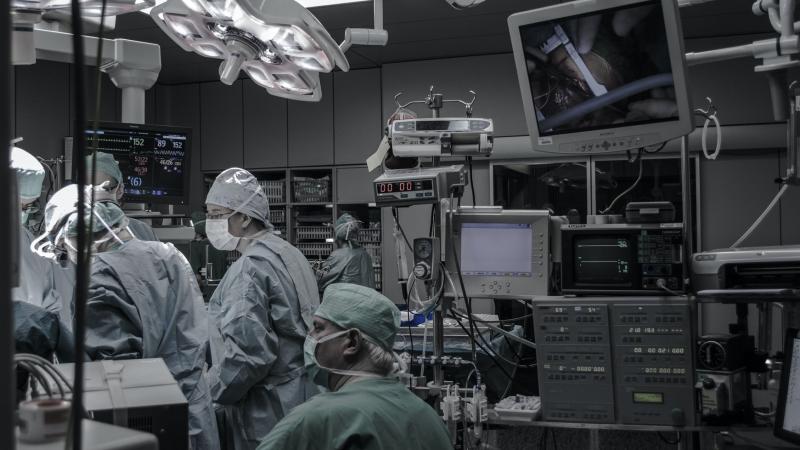5 Things You'll Find in Any Modern OR

The operating room (OR) has come a long way from the days of ominous stainless steel tables in a room filled with a mere few tools in comparison to the myriad of people and equipment found in a modern-day OR. The modern-day OR is full of highly skilled individuals with expert knowledge and top-of-the-range equipment that's only improving to meet the ever-changing demands of healthcare and patient needs.
Below, we will explore 5 of the things you'll always find in an OR room.
A Crash Trolley
You'll find a crash trolley in the majority of hospital wards, if not all, but especially in the OR. 1 in 10,000 people react to anaesthesia - although it's considered rare, that's still a figure high enough to warrant the need for resuscitation equipment. You can see the items commonly found in the crash trolley here - there's a few too many to list.
Medical staff are trained to use every piece of equipment in the trolley to stabilise a patient for transfer. The equipment is far more advanced than it once was, basically containing everything needed to keep a patient alive. Staff have to check the trolley once or twice a week to ensure it's stocked and ready to use.
Commonly Used Operating Equipment
There are possibly hundreds of commonly used OR equipment. Surgical teams need a wide variety of tools to perform an even wider variety of procedures. The surgical retractor, for example, is a device used to hold an incision open while the surgeon does his or her thing. Most major operations require the use of a surgical retractor.
There's also the inevitable tools such as scalpels, sterile scissors, flushes, gauze - the list could go on. Before an operation, surgical teams meet to discuss the procedure. Then, the operating department practitioners prep the room with the required equipment. For infection prevention and cost-saving reasons, only the equipment needed is taken out of packets as and when needed during the procedure.
A Highly-Skilled Anaesthetist
The OR room wouldn't be complete without a highly skilled anaesthetist and perhaps a trainee or two. Most leading anaesthetists are specialist consultants with years of experience, and trainees are typically registrars hoping to be consultants in the making.
Anaesthetists aren't there to only anaesthetise. They're there to sedate, provide analgesia, administer nerve blocks, and generally keep an eye on the clinical observations to ensure the patient is comfortable and that their vital signs are stable.
Surgical and Exam Lights
Operations are hard enough, so it helps to have a big bright light shining down on the patient. You'll find ceiling-mounted surgical lights in most OR's that the surgical team can move to the desired position. Some surgeons, depending on the type of procedure they're performing, will have surgical headlights that illuminate the area they're looking at. Typically, these lights are attached to glasses.
Sterilisation Equipment
It wouldn't be an OR without sterilisation equipment. Sterilisation is key in an OR. God forbid somebody walks into an active OR without a hairnet, shoes covered, and gown on. The reason it's so important is the prevalence of sepsis - a potentially life-threatening response to an infection in the blood. Considering most procedures cause an open wound, there are stringent infection prevention rules in the OR.
Steam or autoclave is the most common way of cleaning reusable surgical equipment, and they are located in most OR's.
The OR is full of weird and wonderful items and people. Theatre lists are longer than they've ever been before, meaning these teams are working longer hours, and there's a need for more equipment. OR's have advanced dramatically over the years, so it will be interesting to see how they progress in years to come.
More to Read:
Previous Posts:








